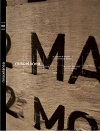On the Road to ‘Some' Place: Sofia Coppola’s Dissident Modernism Against a Postmodern Landscape
DOI:
https://doi.org/10.26754/ojs_misc/mj.20157205Palabras clave:
Sofia Coppola, Somewhere, modernism (modernismo), hobo-hero, Marhsall BermanResumen
Sofia Coppola’s enigmatic film, Somewhere, has met with conflicting responses from critics who attempt to label it a “European” film. Yet, as I argue, the film may be best understood not in its relationship to European cinema, but, rather, its relation to philosophical debates between modernism and postmodernism, to American film history, and, even more importantly, to one of the oldest and most dominant tropes in US culture —that of the hobo-hero. I begin by explaining the background of the figure of the hobo-hero, and its relationship to modernism, and then return to look at the manner in which Coppola draws upon this image in order to invoke (and comment upon) American identity, the postmodern culture of Los Angeles/Hollywood, and questions that are central to the discourse of philosophical modernism. Towards the end of the article, I draw upon the work of Marshall Berman in order to question whether there is a way in which the hobo-hero can allow modernism to openly defy postmodernism itself, even while expressing and exploring a postmodern landscape, a postmodern world. Perhaps surprisingly, I argue that such a question may be best answered by Sofia Coppola’s fourth feature film.
Descargas
Referencias
Backman Rogers, Anna. 2012. “The Historical Threshold: Crisis, Ritual and Liminality in Sofia Coppola’s Marie Antoinette”. Relief 16(1): 80-97.
Baudrillard, Jean. 1988. America. Trans. Chris Turner. New York: Verso.
Bauman, Zygmunt. 1991. Modernity and Ambivalence. Ithaca, NY: Cornell U.P.
Beradinelli, James. 2010. “Somewhere”. ReelReviews. <http://www.reelviews.net/php_review_template.php?identifier=2241>. Accessed June 18, 2014.
Berman, Marshall. (1982) 1988. All that is Solid Melts Into Air. New York: Penguin Books.
Bolton, Lucy. 2011. Film and Female Consciousness: Irigaray, Cinema and Thinking Women. London: Palgrave Macmillan.
Chaplin, Charlie. Directed by 1936. Modern Times. United Artists.
Cook, Pam. 2006. “Portrait of a Lady.” Sight and Sound. 16. 36-40.
Coppola, Sofia. 2003. Lost in Translation. Focus Features.
___. 2006. Marie Antoinette. Columbia Pictures.
___. 2010. Somewhere. Focus Features.
___. 2013. The Bling Ring. American Zoetrope.
Cuarón, Alfonso. 2001. Y tu mamá también. Anhelo Producciones.
Deleuze, Gilles and Félix Guattari. 1987. “1227: Treatise on Nomadology —The War Machine”. A Thousand Plateaus: Capitalism and Schizophrenia. Trans. Brian Massumi. Minneapolis: University of Minnesota Press: 351-423.
Dos Passos, John. (1925) 2000. Manhattan Transfer. New York: Houghton Mifflin.
___. (1936) 2000. The Big Money. New York: Houghton Mifflin.
Emerson, Ralph Waldo. (1841) 1929. “Circles”. The Complete Works of Ralph Waldo Emerson Volume II. New York: William H. Wise.
Kennedy, Todd. 2009. “Bob Dylan’s ‘Highway Shoes’: The Hobo-Hero’s Road through Modernity”. Intertexts 13 (1): 37-58.
___. 2010. “‘Off with Hollywood’s Head’: Sofia Coppola as Feminine Auteur”. Film Criticism 35 (1): 37-59.
Kerouac, Jack. (1957) 1999. On the Road. New York: Penguin.
Lang, Fritz. 1927. Metropolis. Universum Film.
Long, Tom. 2011. “Coppola’s Somewhere Takes us Nowhere” Detroit Free Press. <http://www.detroitnews.com/article/20110114/ENT02/101140329>. Accessed June 18, 2014.
McGowan, John. 1991. Postmodernism and Its Critics. Ithaca, NY: Cornell U.P.
Nicholls, Mike. 1967. The Graduate. Embassy Pictures.
Rafelson, Bob. 1970. Five Easy Pieces. Columbia Pictures.
Scott, A.O. “The Pampered Life, Viewed from the Inside”. New York Times. <http://www.nytimes.com/2010/12/22/movies/22somewhere.html?pagewanted=all&_r=0>. Accessed June 18, 2014.
Simmel, Georg. (1903) 1950. “The Metropolis and Mental Life”. In Kurt H. Wolff (ed.) The Sociology of Georg Simmel. New York: Free Press: 409-24.
Smaill, Belinda. 2013. “Sofia Coppola: Reading the Director”. Feminist Media Studies. 13 (1): 148-62.
Smith, Kyle. 2010. “Audiences Would be Better Off Somewhere Else”. New York Free Press. <http://nypost.com/2010/12/22/audienceswould-be-better-off-somewhere-else/>. Accessed June 18, 2014.
Steinbeck, John. (1962) 1997. Travels with Charlie in Search of America. New York: Penguin.
Stevens, Dana. 2010. “My Sofia Problem”. Slate. <http://www.slate.com/articles/arts/movies/2010/12/my_sofia_problem.html>. Accessed June 18, 2014.
Travers, Peter. 2010. “Somewhere”. Rolling Stone. <http://www.rollingstone.com/movies/reviews/somewhere-20101221>. Accessed
June 18, 2014.
Whitman, Walt. (1856) 1982. “Song of the Open Road”. Walt Whitman: Complete Poetry and Collected Prose. New York: Library of America:5-26.
Wolfe, Thomas. (1940) 2011. You Can’t Go Home Again. New York: Scribner.
Descargas
Publicado
Número
Sección
Licencia
Derechos de autor 2015 Todd Kennedy

Esta obra está bajo una licencia internacional Creative Commons Atribución-NoComercial 4.0.


